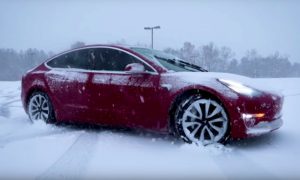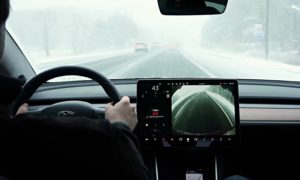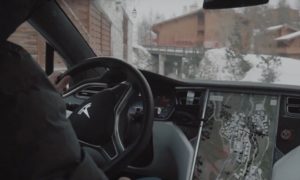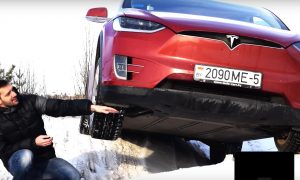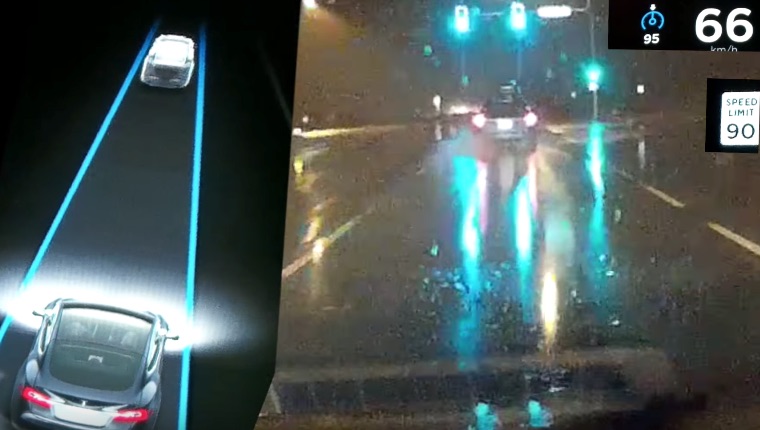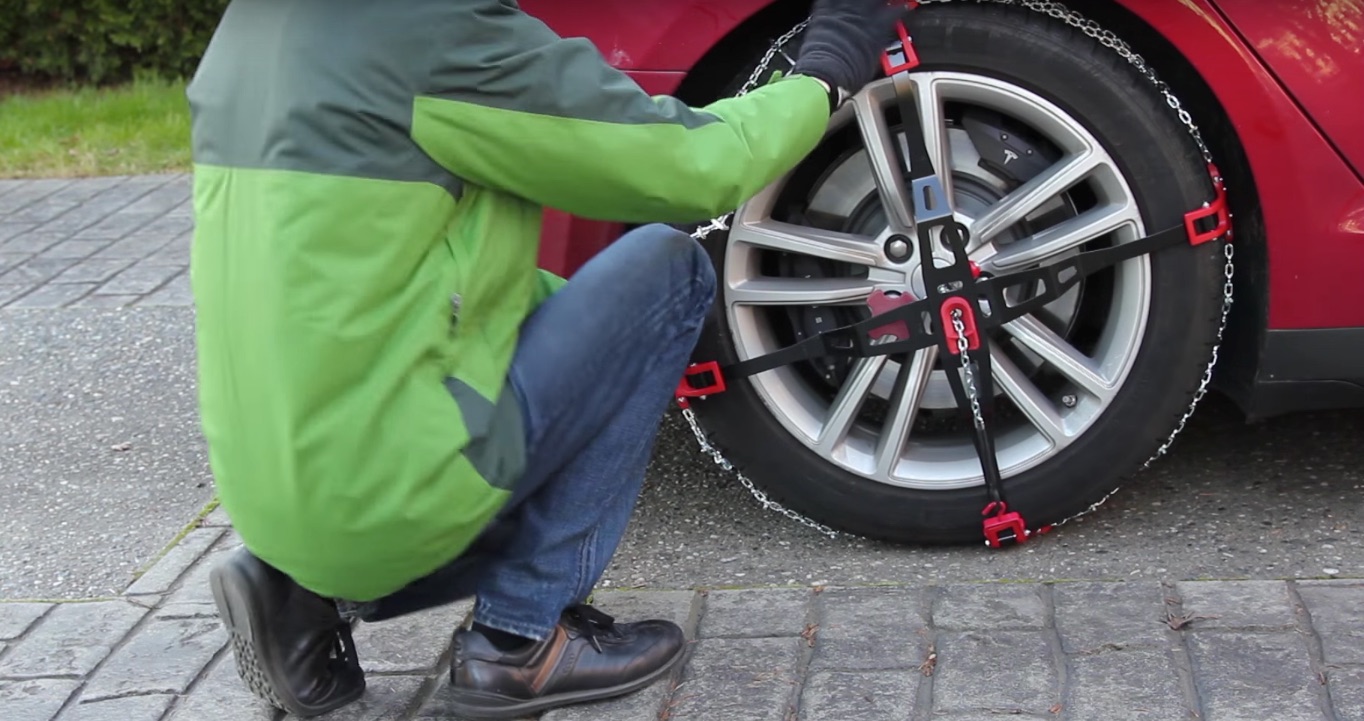Lifestyle
Winter Driving in the Tesla Model S
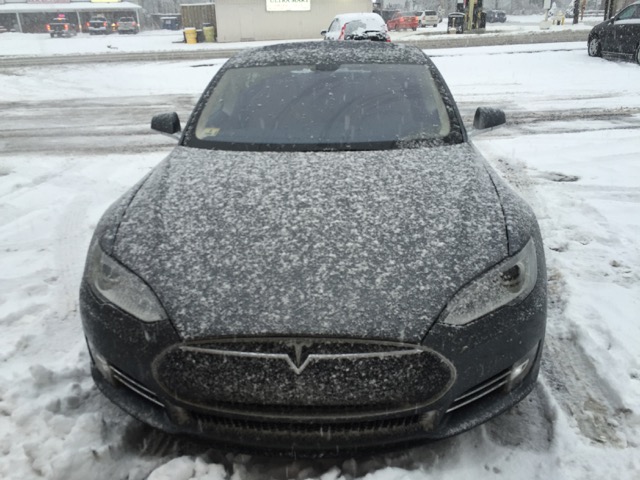

We’re hit with record breaking snow in the north eastern part of the US but that hasn’t stopped me from taking my Tesla Model S (non-AWD) out for some winter driving. My Nokian Hakkapeliitta R2 winter tires have seen wet, snowy and icy conditions and I’m here to tell you about how the experience has been thus far.
Traction and Stability Control
Before I go into details on how the winter tires perform I need to touch on traction control first. The Tesla Model S has both stability and traction control, something I reviewed in a previous post, which are designed to help a driver maintain control of the vehicle. You’ll really get to see traction control take effect when driving through a mix of wet slushy snow.
RELATED: Tesla Model S Winter Tires and Wheels Preparation
The Model S is able to respond to tire slippage much faster than other cars due to the super-fast response time between the traction control unit and the electric motor driving the wheels. Traction control allows the Model S to quickly shift power between wheels via an open differential. It will back off power to those wheels that slip.
With traction control enabled you can literally pull onto a patch of snow and floor the “go pedal”without losing control. The Model S will begin picking up speed as long as the wheels aren’t slipping. It’s been a fun and bizarre experience to try this and so far it hasn’t gotten old.
Tires
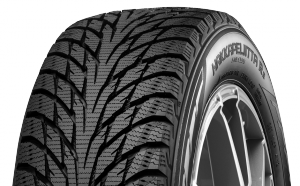 Traction control is great however in order for braking to be effective, the tires essentially need to be able to grip onto the road. It doesn’t matter how much sophistication is built into traction control since at the end of the day you’ll still need a good set of winter tires that can bite into the slipper winter surface.
Traction control is great however in order for braking to be effective, the tires essentially need to be able to grip onto the road. It doesn’t matter how much sophistication is built into traction control since at the end of the day you’ll still need a good set of winter tires that can bite into the slipper winter surface.
Last year here in Boston there were reports of Model S owners that couldn’t drive up small hills found across the city. This all comes down to tires. The factory 21″ performance tires won’t get you up the hills during a Boston winter.
The Nokian tires on the other hand are designed specifically for the winter. They’re designed to grip on snow, ice and at very low temperatures. I tried the tires in a number of different conditions ranging from a few inches of snow, to a foot of slush to ice/snow mixes, to extremely cold weather and in each case the tires were able to grab hold.
Be Safe
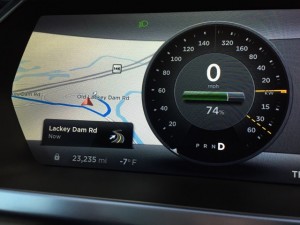 Traction control and winter tires aside, the most important tip for winter driving is to exercise caution. Here are a few more winter driving tips for the Tesla Model S:
Traction control and winter tires aside, the most important tip for winter driving is to exercise caution. Here are a few more winter driving tips for the Tesla Model S:
- Assuming your regenerative braking isn’t limited due to extreme weather conditions, you may want to change the regenerative braking option to low. The aggressive deceleration of full regenerative braking isn’t good for traction when dealing with slippery conditions.
- The Model S is low to the ground so I’d think twice before driving through more than 6″ of snow regardless of your setup.
- Be extra careful around turns and give yourself plenty of stopping distance by leaving enough space between you and the car ahead of you.
- Watch those behind you and make sure they’re capable of stopping in time.
- Stay home and work at home if you can. The Model S is really efficient, but not commuting at all is even more efficient. You can still go sit in your Model S if you miss it!
AAA has a great guide for winter driving which is a good read to help you prep your Model S for winter.
Stay warm and be safe out there!
Elon Musk
X account with 184 followers inadvertently saves US space program amid Musk-Trump row
Needless to say, the X user has far more than 184 followers today after his level-headed feat.

An X user with 184 followers has become the unlikely hero of the United States’ space program by effectively de-escalating a row between SpaceX CEO Elon Musk and President Donald Trump on social media.
Needless to say, the X user has far more than 184 followers today after his level-headed feat.
A Near Fall
During Elon Musk and Donald Trump’s fallout last week, the U.S. President stated in a post on Truth Social that a good way for the United States government to save money would be to terminate subsidies and contracts from the CEO’s companies. Musk responded to Trump’s post by stating that SpaceX will start decommissioning its Dragon spacecraft immediately.
Musk’s comment was received with shock among the space community, partly because the U.S. space program is currently reliant on SpaceX to send supplies and astronauts to the International Space Station (ISS). Without Dragon, the United States will likely have to utilize Russia’s Soyuz for the same services—at a significantly higher price.
X User to the Rescue
It was evident among X users that Musk’s comments about Dragon being decommissioned were posted while emotions were high. It was then no surprise that an X account with 184 followers, @Fab25june, commented on Musk’s post, urging the CEO to rethink his decision. “This is a shame this back and forth. You are both better than this. Cool off and take a step back for a couple days,” the X user wrote in a reply.
Much to the social media platform’s surprise, Musk responded to the user. Even more surprising, the CEO stated that SpaceX would not be decommissioning Dragon after all. “Good advice. Ok, we won’t decommission Dragon,” Musk wrote in a post on X.
Not Planned, But Welcomed
The X user’s comment and Musk’s response were received extremely well by social media users, many of whom noted that @Fab25june’s X comment effectively saved the U.S. space program. In a follow-up comment, the X user, who has over 9,100 followers as of writing, stated that he did not really plan on being a mediator between Musk and Trump.
“Elon Musk replied to me. Somehow, I became the accidental peace broker between two billionaires. I didn’t plan this. I was just being me. Two great minds can do wonders. Sometimes, all it takes is a breather. Grateful for every like, DM, and new follow. Life’s weird. The internet’s weirder. Let’s ride. (Manifesting peace… and maybe a Model Y.)” the X user wrote.
Lifestyle
Tesla Cybertruck takes a bump from epic failing Dodge Charger
The Cybertruck seemed unharmed by the charging Charger.
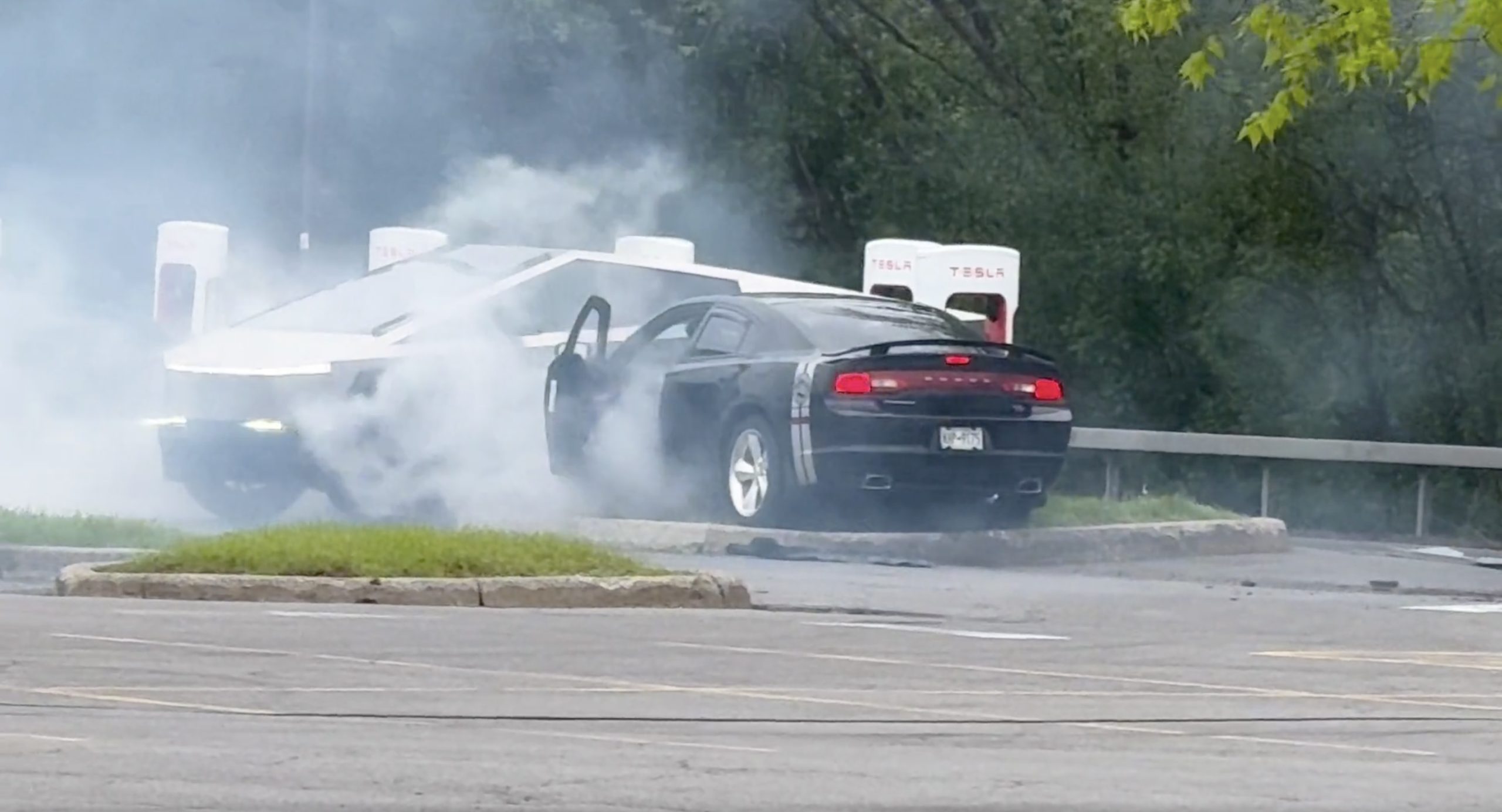
There comes a time in a driver’s life when one is faced with one’s limitations. For the driver of a Dodge Charger, this time came when he lost control and crashed into a Tesla Cybertruck–an absolute epic fail.
A video of the rather unfortunate incident was shared on the r/TeslaLounge subreddit.
Charging Charger Fails
As could be seen in the video, which was posted on the subreddit by Model Y owner u/Hammer_of_something, a group of teens in a Dodge Charger decided to do some burnouts at a Tesla Supercharger. Unfortunately, the driver of the Charger failed in his burnout or donut attempt, resulting in the mopar sedan going over a curb and bumping a charging Cybertruck.
Ironically, the Dodge Charger seemed to have been parked at a Supercharger stall before its driver decided to perform the failed stunt. This suggests that the vehicle was likely ICE-ing a charging stall before it had its epic fail moment. Amusingly enough, the subreddit member noted that the Cybertruck did not seem like it took any damage at all despite its bump. The Charger, however, seemed like it ran into some trouble after crashing into the truck.
Alleged Aftermath
As per the the r/TeslaLounge subreddit member, the Cybertruck owner came rushing out to his vehicle after the Dodge Charger crashed into it. The Model Y owner then sent over the full video of the incident, which clearly showed the Charger attempting a burnout, failing, and bumping into the Cybertruck. The Cybertruck owner likely appreciated the video, in part because it showed the driver of the Dodge Charger absolutely freaking out after the incident.
The Cybertruck is not an impregnable vehicle, but it can take bumps pretty well thanks to its thick stainless steel body. Based on this video, it appears that the Cybertruck can even take bumps from a charging Charger, all while chilling and charging at a Supercharger. As for the teens in the Dodge, they likely had to provide a long explanation to authorities after the incident, since the cops were called to the location.
Lifestyle
Anti-Elon Musk group crushes Tesla Model 3 with Sherman tank–with unexpected results
Ironically enough, the group’s video ended up highlighting something very positive for Tesla.
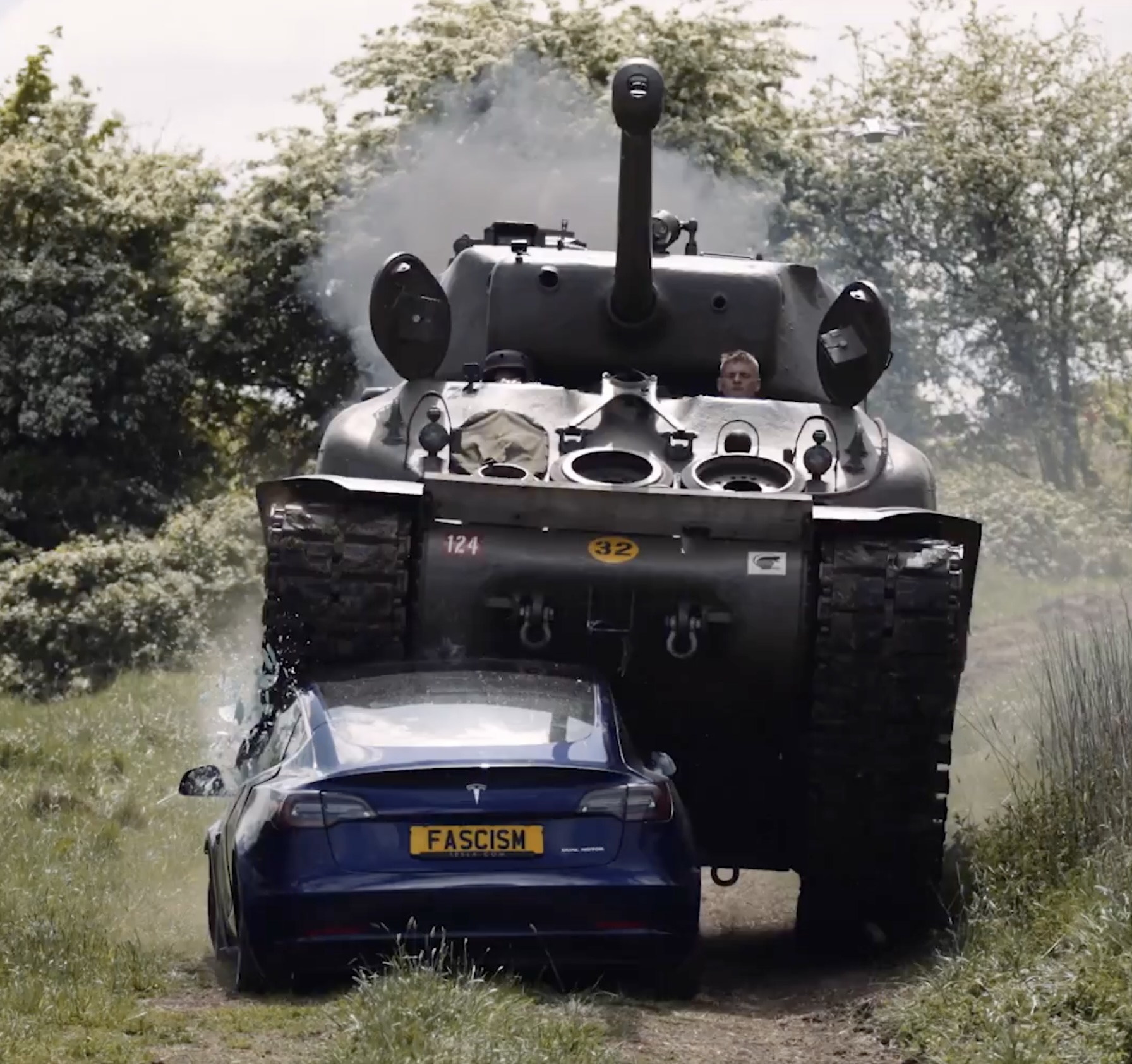
Anti-Elon Musk protesters and critics tend to show their disdain for the CEO in various ways, but a recent video from political action group Led By Donkeys definitely takes the cake when it comes to creativity.
Ironially enough, the group’s video also ended up highlighting something very positive for Tesla.
Tank vs. Tesla
In its video, Led By Donkeys featured Ken Turner, a 98-year-old veteran who served in the British army during World War II. The veteran stated that Elon Musk, the richest man in the world, is “using his immense power to support the far-right in Europe, and his money comes from Tesla cars.”
He also noted that he had a message for the Tesla CEO: “We’ve crushed fascism before and we’ll crush it again.” To emphasize his point, the veteran proceeded to drive a Sherman tank over a blue Tesla Model 3 sedan, which, of course, had a plate that read “Fascism.”
The heavy tank crushed the Model 3’s glass roof and windows, much to the delight of Led By Donkeys’ commenters on its official YouTube channel. But at the end of it all, the aftermath of the anti-Elon Musk demonstration ended up showcasing something positive for the electric vehicle maker.
Tesla Model 3 Tanks the Tank?
As could be seen from the wreckage of the Tesla Model 3 after its Sherman encounter, only the glass roof and windows of the all-electric sedan were crushed. Looking at the wreckage of the Model 3, it seemed like its doors could still be opened, and everything on its lower section looked intact.
Considering that a standard M4 Sherman weighs about 66,800 to 84,000 pounds, the Model 3 actually weathered the tank’s assault really well. Granted, the vehicle’s suspension height before the political action group’s demonstration suggests that the Model 3’s high voltage battery had been removed beforehand. But even if it hadn’t been taken off, it seemed like the vehicle’s battery would have survived the heavy ordeal without much incident.
This was highlighted in comments from users on social media platform X, many of whom noted that a person in the Model 3 could very well have survived the ordeal with the Sherman. And that, ultimately, just speaks to the safety of Tesla’s vehicles. There is a reason why Teslas consistently rank among the safest cars on the road, after all.
-

 Elon Musk4 days ago
Elon Musk4 days agoTesla investors will be shocked by Jim Cramer’s latest assessment
-

 News1 week ago
News1 week agoTesla Robotaxi’s biggest challenge seems to be this one thing
-

 Elon Musk2 weeks ago
Elon Musk2 weeks agoFirst Look at Tesla’s Robotaxi App: features, design, and more
-

 News2 weeks ago
News2 weeks agoWatch Tesla’s first driverless public Robotaxi rides in Texas
-

 News2 weeks ago
News2 weeks agoSpaceX and Elon Musk share insights on Starship Ship 36’s RUD
-

 News1 week ago
News1 week agoWatch the first true Tesla Robotaxi intervention by safety monitor
-

 News2 weeks ago
News2 weeks agoTesla has started rolling out initial round of Robotaxi invites
-

 Elon Musk2 weeks ago
Elon Musk2 weeks agoTesla to launch in India in July with vehicles already arriving: report


